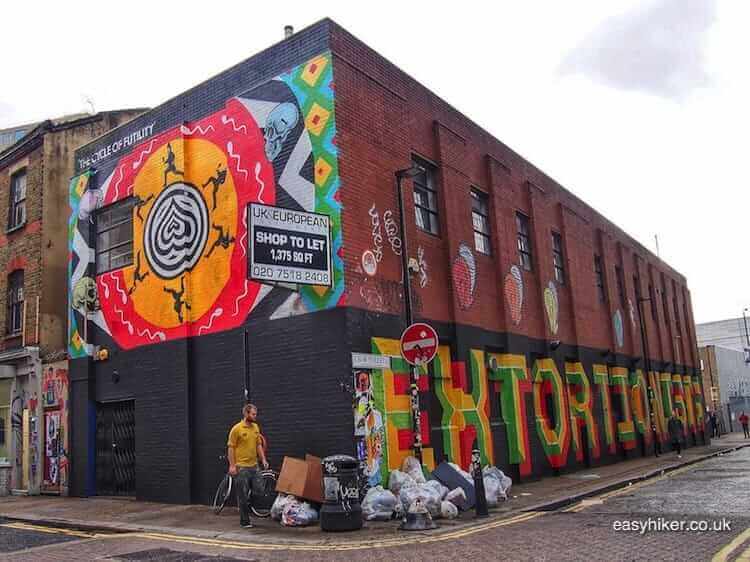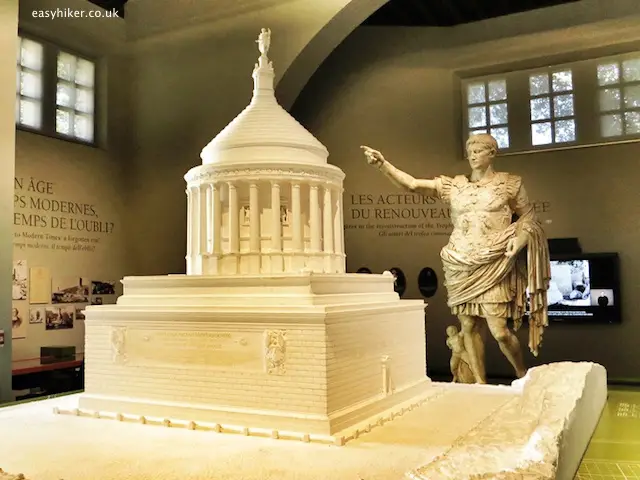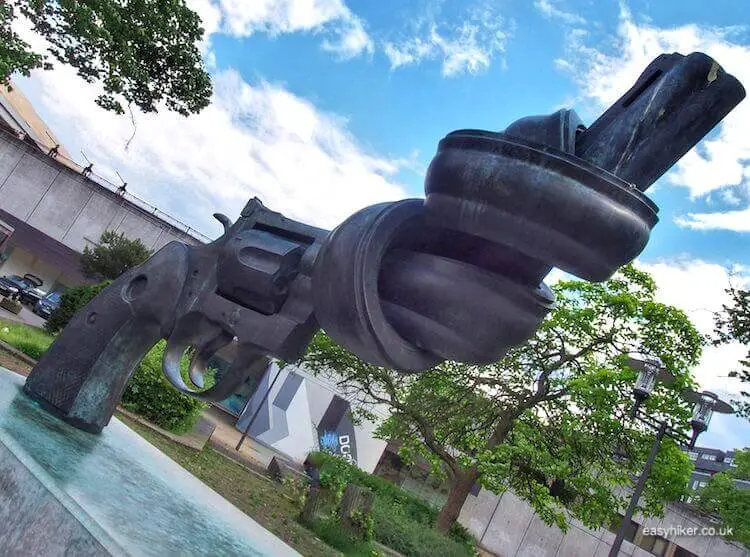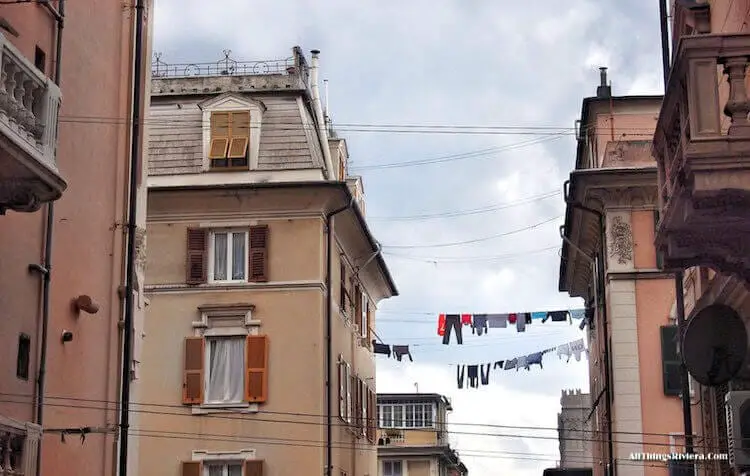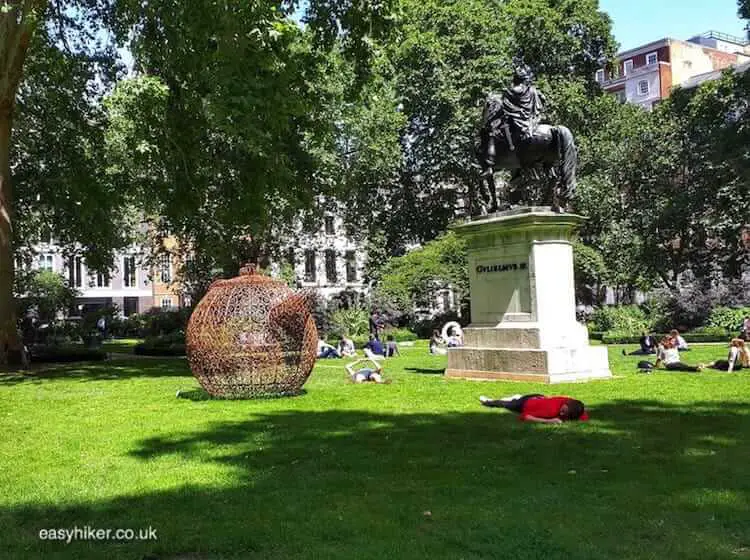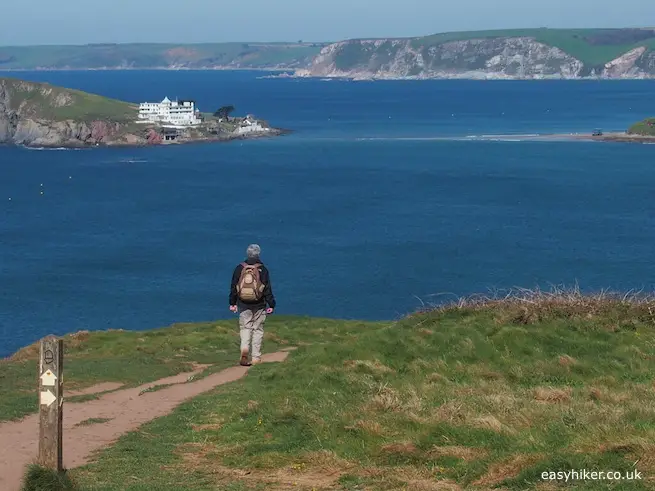William Shakespeare is arguably the world’s greatest writer, but he is also literature’s great man of mystery. We know almost all of his plays and poems, but little of the man himself.
Unusually for a man of letters, we do not know his “philosophy” and where he stood on the great issues of the day (Catholic or Protestant?). We are not even sure what he looked like (or how he preferred to spell his own name).
All we have are some fragments of his biography: where he worked and where he lived in London throughout the most fruitful years of his career, for example – not that we were able to identify specific spots on a modern map of the city, but we can pretty well narrow down “Shakespeare’s world” to an area of roughly a quarter mile in diameter.
Under such circumstances, what kind of insight can we expect to derive from a Shakespeare Walk through the modern streets of London? This is what we are set to find out today.
Searching for Shakespeare in Shoreditch
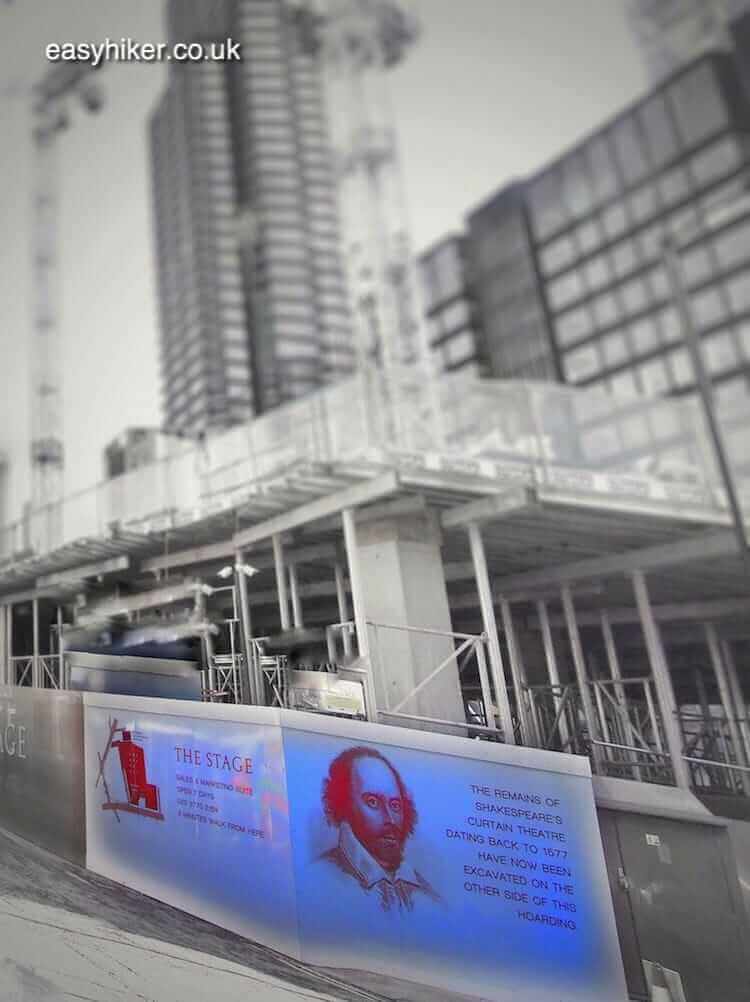
We start our walk in search of Shakespeare in Shoreditch over its ground station, looking for the White Horse Pub which is said to have been frequented by Shakespeare.
For centuries, this pub on the corner of Shoreditch High Street and Redchurch Street – going through a number of renovations and reincarnations – was one of the last survivors of Tudor London. Alas, it no longer exists.
Two years ago, it was converted into a fancy restaurant (“a slick London twist on the all-day informal restaurants of the Peruvian Andes”). Thus, right from the start, something like a leitmotif of the walk has been established.
Looking to our left up Shoreditch High Street, we can see the crossing with Commercial Street from here (those were the two ancient highways leading to the north and east respectively), …
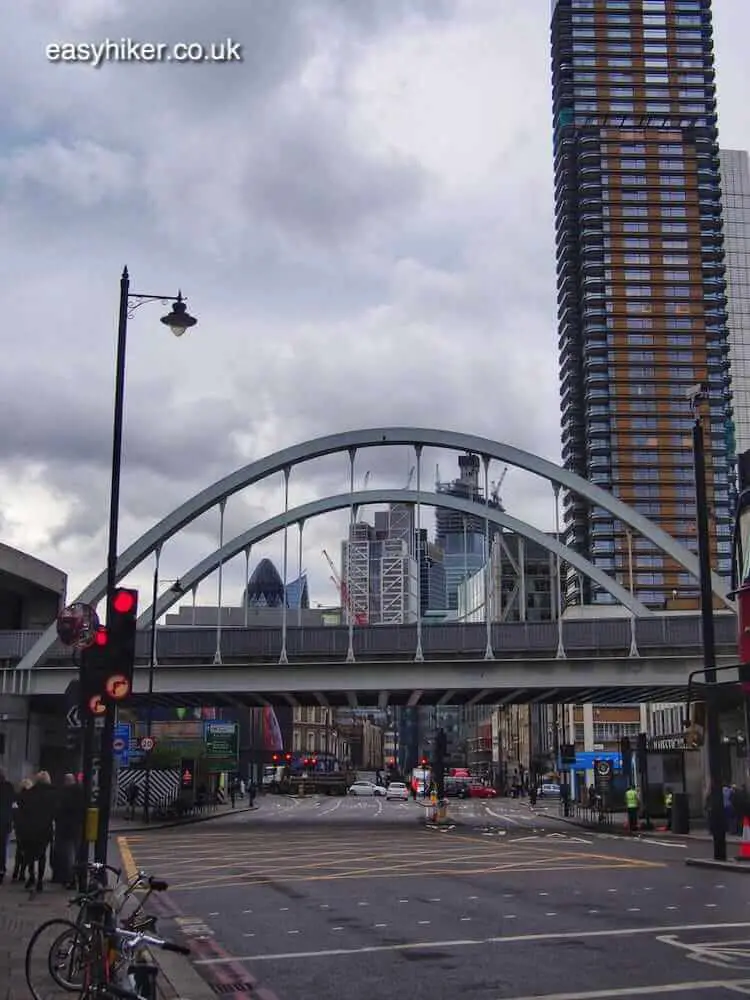
… where the popular comedian Will Kemp started his Nine Days Wonder tour in 1599, intending to “jig” – apparently something halfway between a dance and a “silly walk” – all the way (100 miles) to Norwich so he could later write a book about his experience. (Isn’t this strikingly similar to what a modern celebrity would do?)
Kemp was a star of the Elizabethan stage and had done so well out of his theatrical clowning-around that he had become a shareholder in the Chamberlains Men, Shakespeare’s acting troupe. His scene-stealing antics attracted audiences in such numbers that authors wrote parts to accommodate him no matter what the rest of the play was all about.
Whenever you see an early Shakespeare play where a character appears who seems strangely at odds with the tone of the play, this role was most probably written for Kemp. (The most famous example is Dogberry in “Much Ado About Nothing”.)
Walk up Redchurch Street and turn left into Club Row, the centre of Huguenot London in Shakespeare’s time. Today, however, instead of a “chippie” – the Huguenots are the presumed inventors of Britain’s quintessential dish, the deep-fried “fish and chips” – you are more likely to find commercial premises like this one, a two-floor barber shop which is embedded into a cafeteria and surrounded by “retail and relaxing spaces”.
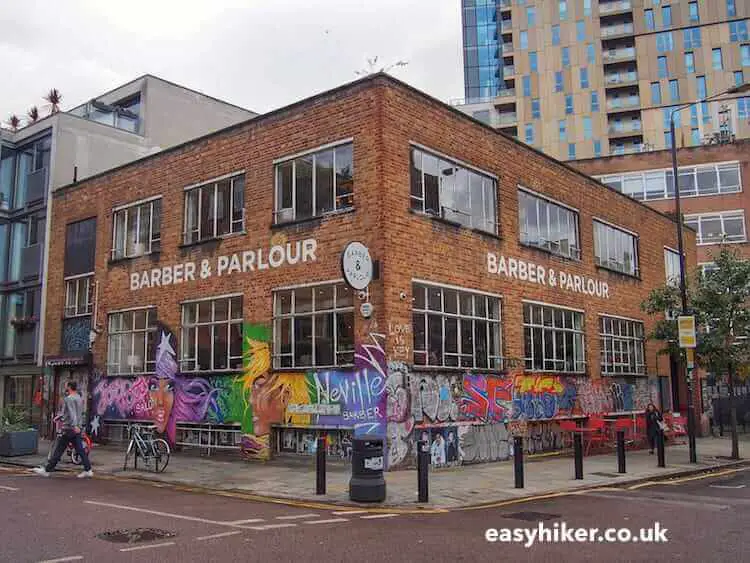
Continue up to Boundary Gardens, the “green lungs” of the quarter …
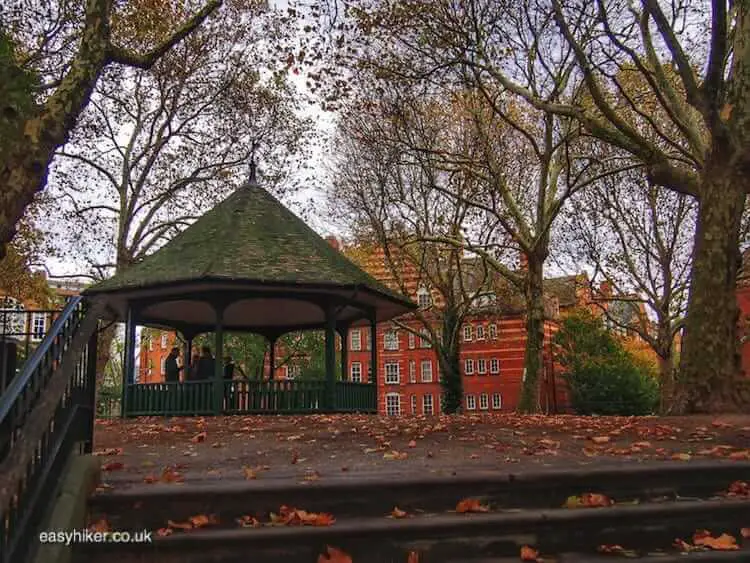
… to turn into Calvert Avenue and then right into Shoreditch High Street for St Leonard’s Church, also known as Shoreditch Church (“when I grow rich, say the bells of Shoreditch”, according to the nursery rhyme).
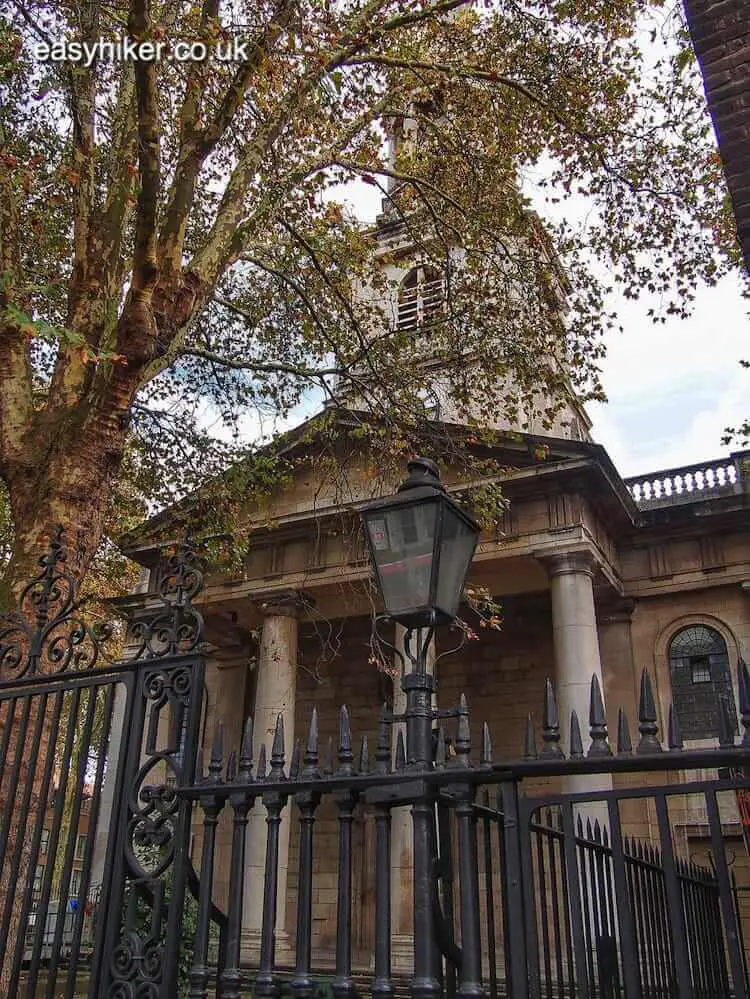
In Elizabethan times, St Leonard’s was known as the actors’ church, and this is where Shakespeare would have worshipped. The current building dates from 1780, the original church having collapsed in 1716.
The graves of some of the most famous Elizabethan actors (incl. James and Richard Burbage), however, are still there. (And the spooky crypt is said to have provided Shakespeare with scenic inspiration for the dramatic showdown in Romeo & Juliet.)
Cross Shoreditch High Street for Rivington Street and into what, in Shakespeare’s times, would have been considered London’s Theatreland. We must, however, not imagine that this looked anything like the modern West End.
Contemporary sketches of the area show fields and cows, loosely scattered with buildings that have the characteristic cylindrical shape of Tudor theatres. In reality, however, the Shoreditch of Shakespeare’s time may have been considerably less bucolic.
Outside the jurisdiction of the City, there were neither building restrictions nor proper roads, so the quarter would have resembled a disorderly jumble of alehouses, taverns, gambling houses and brothels, roamed by beggars, bandits and semi-feral animals.
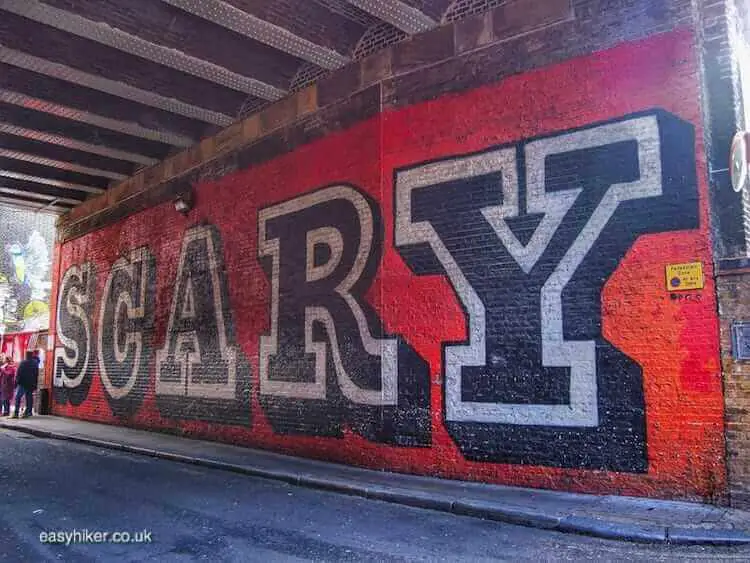
On this walk in search of Shakespeare in Shoredith, turn left into Curtain Road where, near the end at the corner with New Inn Yard, you will find the spot where The Theatre once stood, generally thought to have been London’s first purpose-built playhouse.
Built in 1576, it was dismantled in 1598 and rebuilt by the owners (the Burbage family) as The Globe on Bankside. (Shakespeare acted on The Theatre’s stage, and some of his plays such as Romeo & Juliet were premiered here.)
Two plaques on 86–90 Curtain Road – the local branch of Foxtons estate agents – commemorate the place. (In August 2008 archaeologists from the Museum of London announced that they had found what they believed to be the remains of the north-eastern foundations of The Theatre.
The site is to be used to build a new theatre for the Tower Theatre Company, an independent theatre group which has been homeless since 2003.)
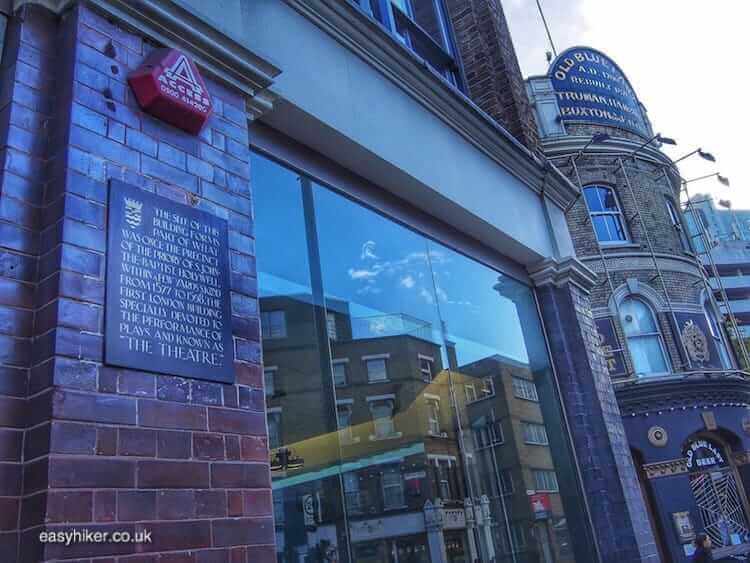
Continue straight across Great Eastern Street, and on the corner with Hewett Street you will spot the hoardings of a large building site.
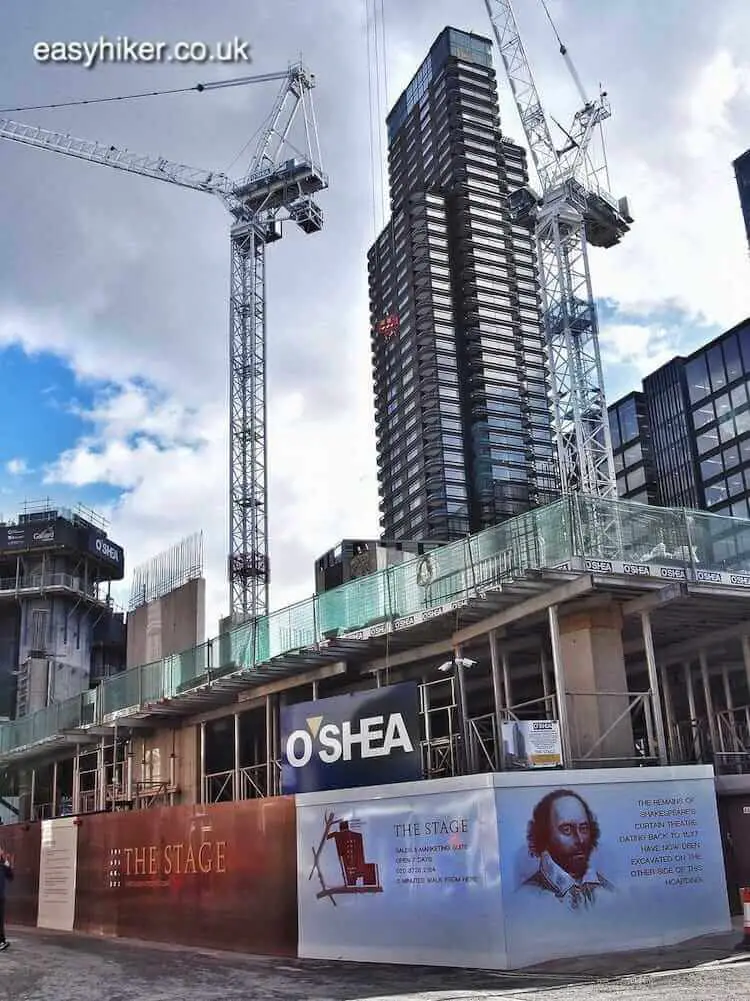
This is the ancient location of the Curtain Theatre, which was built in 1577 as London’s second theatre and remained in use until 1625 (also, for a period, by Shakespeare’s Chamberlain’s Men), longer than any other playhouse in the area.
Its remains were discovered in 2011 during exploratory works for a planned 40-storey tower block. What is left of the Curtain Theatre will now be worked into a public visitor complex with exhibits and a 150-seat auditorium. (It was here where some of Shakespeare’s plays from the late 1590s including Henry V were premiered.)
Continue down Curtain Road into Worship Street on your left (formerly Hog Lane) …
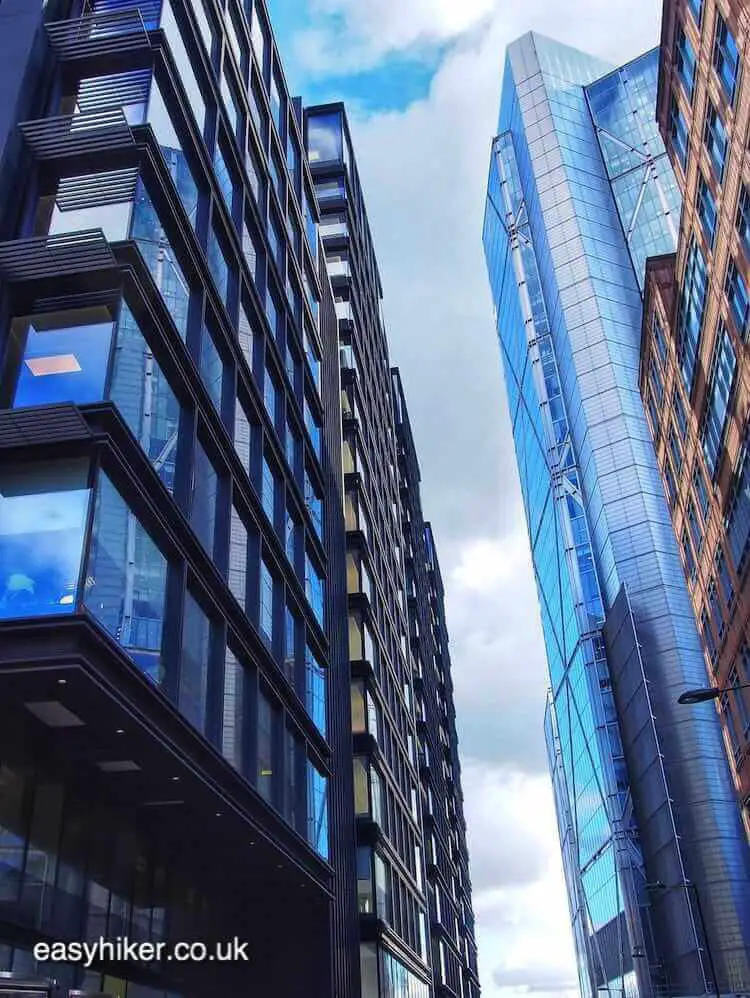
… where Christopher Marlowe, Shakespeare’s great rival, narrowly avoided death in a pub brawl when a member of his entourage killed a certain William Bradley (the son of the innkeeper) who had attacked Marlowe with a knife.
At the end of Worship Street, turn right into Bishopsgate. On the left side of the street, in Devonshire Row, you can find the remains of the place where some of Shakespeare’s plays were written – or not, depending on whom you choose to believe.
Here, in the building where the Bull and Hyde pub currently resides, is where Edward de Vere lived from 1579 to 1588. De Vere is suspected by some to be the real literary genius and author of all the famous plays, with Shakespeare merely acting as his “strawman”.
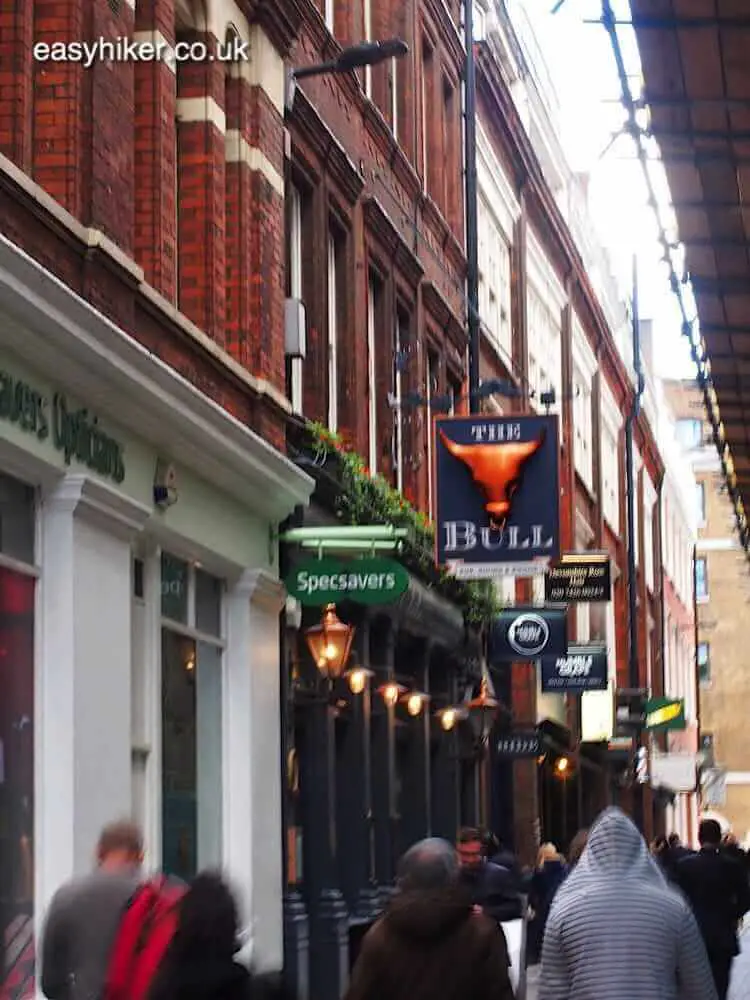
Continue down Bishopsgate for St Helen’s Church, an authentic piece of medieval (and Tudor) London which has survived both the Great Fire and the Blitz of WWII. In 1566, Shakespeare lived near-by and would certainly have worshipped here.
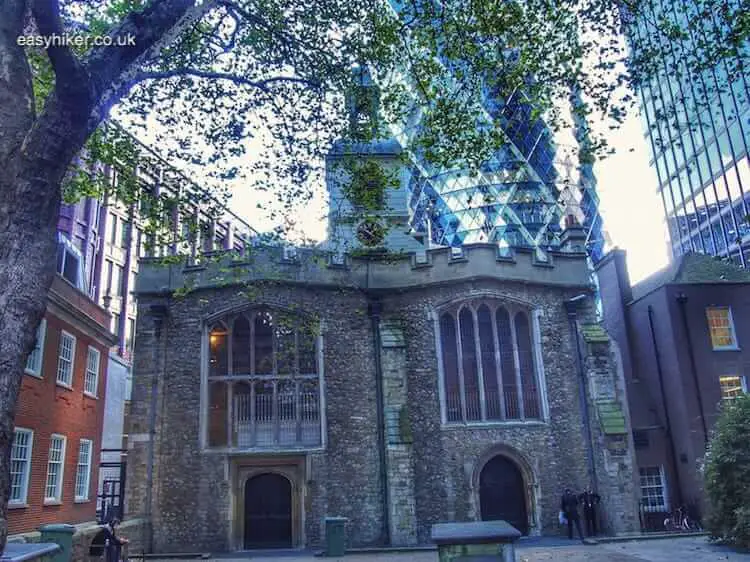
Retrace your steps to the intersection with London Wall and make your way northwards (through Moorgate, Chiswell Street and Whitecross Street) to Edward Alleyn’s Fortune Theatre on Fortune Street.
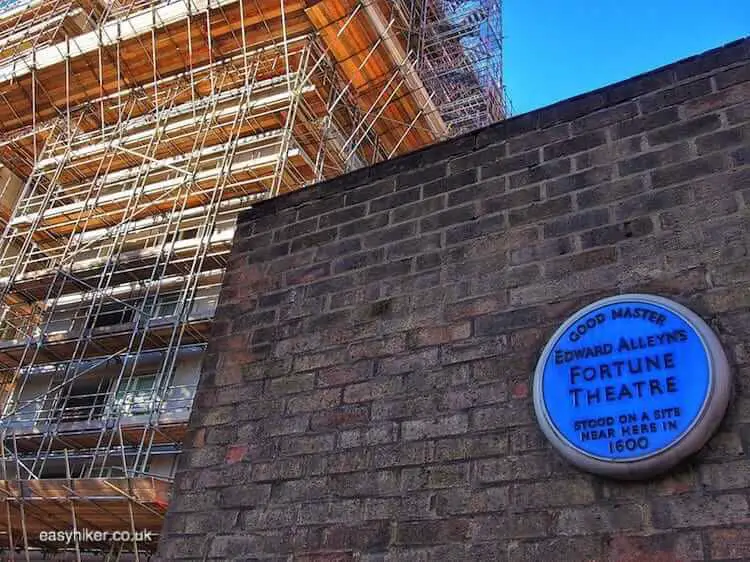
The Fortune was constructed in 1600 as the chief competitor to Shakespeare’s and Burbage’s Globe Theatre, but soon acquired a reputation for rowdy audiences and fisticuffs. (This was where Moll Cat Purse aka Mary Frith performed, singing obscene songs dressed as a man in one of the Elizabethan stage’s biggest scandals.)
At the end of Fortune Street, turn left into Golden Lane and walk straight into the Barbican complex. Hidden inside this piece of architectural brutalism from the 1970s, we can find some of London’s most authentic Shakespearean locations.
From some (miraculously recovered) protocols of a minor court case of the time, we know that Shakespeare lodged with the Mountjoys in 1604, a family of wigmakers from France, and that their house stood opposite St Olave’s churchyard, at the corner of Silver and Monkwell Streets in Cripplegate, London. This is the only evidence we have of a particular London address at which Shakespeare lived.
The bad news is that St Olave’s church was destroyed in the Great Fire of London and that Monkwell Street was obliterated by the bombing raids of the Second World War, so a lot depends on educated guesswork.
It seems, however, that the modern-day Mountjoy House (on the right) …
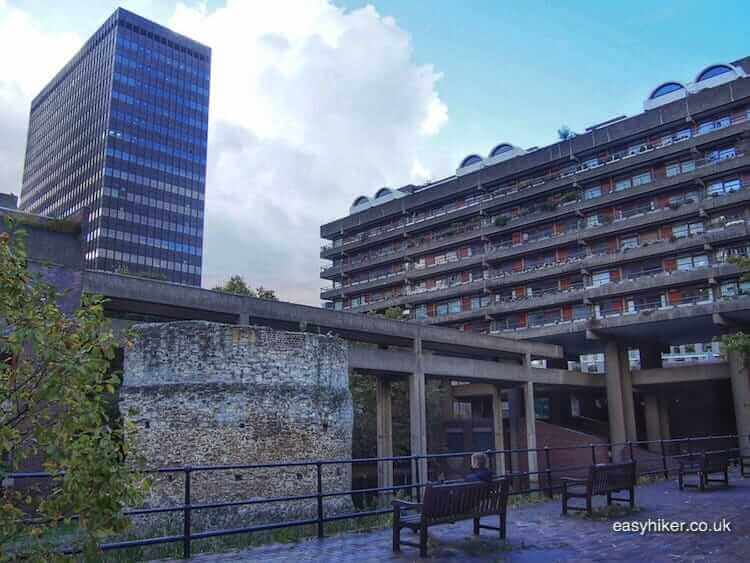
… was built pretty much on the spot where the Mountjoys lived, and that the garden of Barber Surgeons Hall …
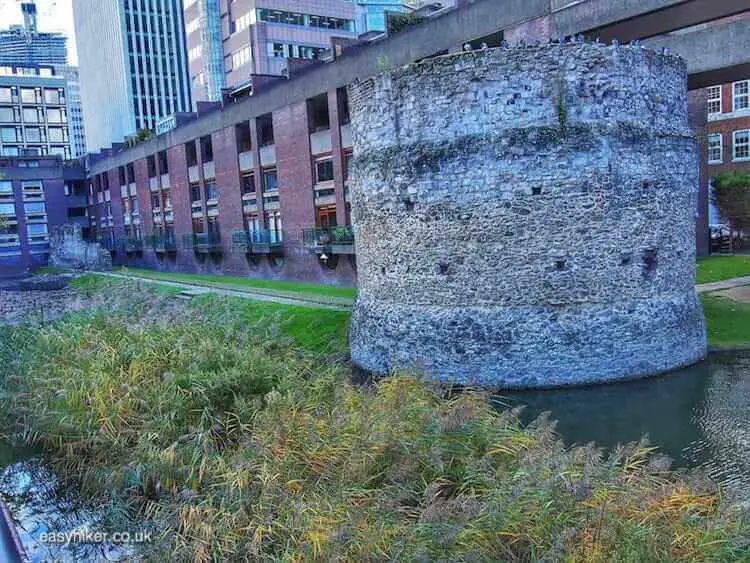
… with its medieval remains would have bordered on the original Monkwell Street.
And in the middle of all this stands the ancient church of St Giles (built in 1394), one of the few extant places in modern London with a known and certified Shakespeare connection: this is where William attended the christening of his brother Edmund’s son in 1607.
Not much, perhaps, but in the land of the “we-must-assume-that” and “based-on-the-balance-of-probabilities”, any certainty – no matter how trifling – goes a long way.
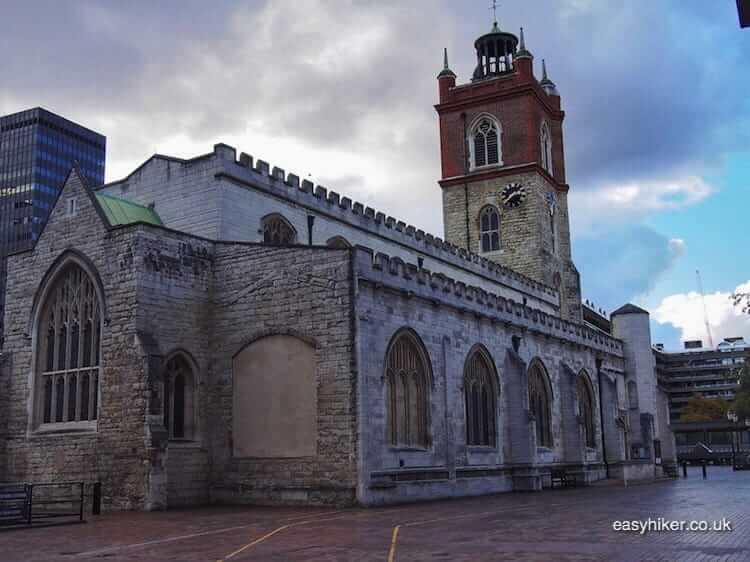
What, then, to make of all this? Apart from some old churches, this walk in search of Shakespeare in Shoreditch is an oddly Tudor-free experience. There is certainly not much left of 16th century London in the modern streets of the City. If this did not come as a major surprise, I was nevertheless perplexed by the lack of respect that Shoreditch demonstrates for its more recent history.
In the 19th and early 20th century, this area was the home of variety theatres and music halls, earning itself the moniker as the “West End of the East End”. But there is little to remind you of this. The White Horse pub is not the only victim of the area’s gentrification.
Take, for example, the Ship and Blue Ball pub on Boundary Street, another East End institution where – in an upstairs function room – Bruce Reynolds and his associates planned the Great Train Robbery in 1962.
The pub no longer exists, and its premises now accommodate a “minimalist shoe shop”. (A what?) Overall, it may be a good thing that Buster, Ronald Biggs & Co. did not live to see that.
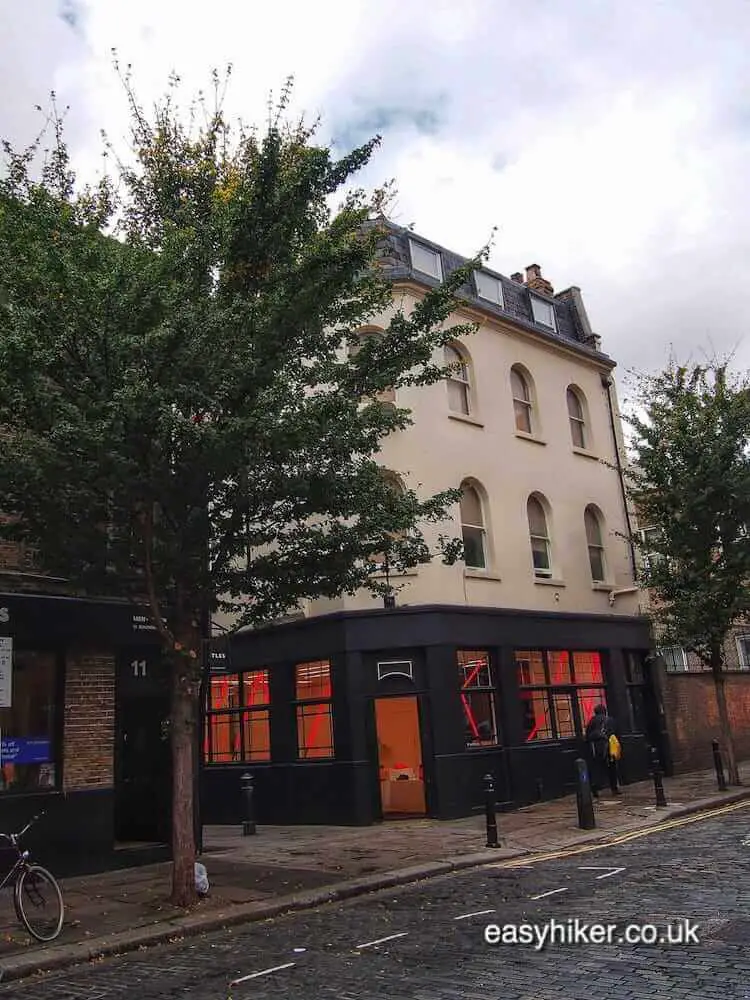
But then again, Shoreditch has always been like this: unburdened by tradition, unsentimental and ready to embrace the new in its pursuit of a quick buck.
Just take Shakespeare himself: a small-town boy with big ideas and a half-baked education, determined to create his own luck in the cut-throat world of popular entertainment. Would he not have been a shoo-in for the “creative industries” that have decided to settle in 21st century Shoreditch?
Shoreditch has changed tremendously over the past 30 years and it is still changing as you are reading this, but it has also remained faithful to its old spirit of survival against all odds.
Can we still find Shakespeare in Shoreditch today?
